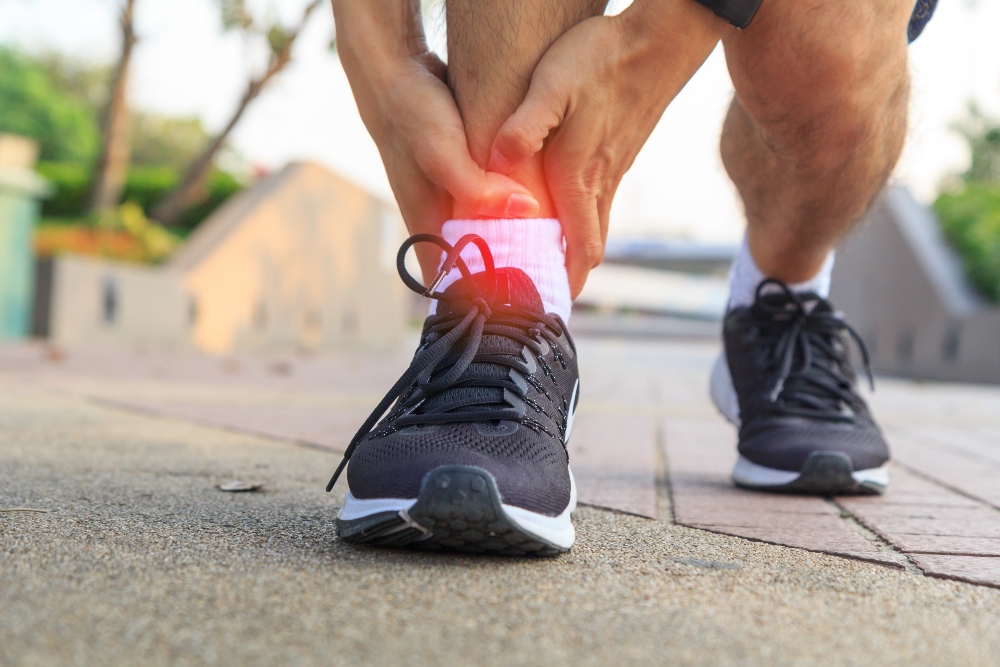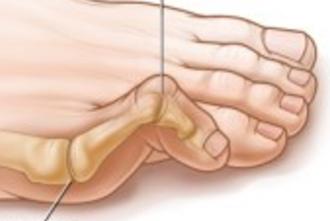For runners, your feet sure take the brunt of your impact. That’s why many active long-distance, and even casual joggers, experience foot problems.
From heel pain to achy forefeet and toes, runner’s foot pain and injuries are often centralized to a specific region.
Let’s explore some common foot injuries runners face— and take the proper steps to prevent problems in the future.

When Running Causes…Heel or Arch Pain
If you have heel pain after running, you may have one of these two conditions: Plantar Fasciitis or Achilles Tendonitis:
Plantar Fasciitis
Most commonly, long-distance runners irritate the plantar fasciitis, the ligament that holds up your arch and runs along the bottom of your foot. This can cause a stabbing pain around your heel.
PREVENTION TIPS: Stretch, opt for shoes with arch support, ice your foot post-run, take anti-inflammatory medication to reduce swelling or roll a tennis ball across your foot to massage the plantar fasciitis.
Achilles Tendonitis
Do you have pain above your heel towards the back of the ankle? As a runner, you could have injured your Achilles tendon, running up the back of your calf, by increasing the intensity or duration of your runs. This mild aching, tenderness or stiffness often hurts even without activity. PREVENTION TIPS: Be mindful of increasing your intensity gradually, warm-up before exercising and stretch, strengthen your calf muscles with specially targeted exercises and replace worn-out sneakers to avoid stress to your Achilles tendon.
Learn more about these common causes of heel pain and other conditions here.

When Running Causes…Ball of the Foot or Toe Pain
If the ball of your foot is the problem during your run, you could have Neuroma or Diabetic Neuropathy.
Neuroma
Does it feel like you’re constantly stepping on a little stone or do you experience a searing pain around the ball of your foot? Neuroma is a pinched nerve that can cause a burning pain around the forefront of your feet, near your toes— even numbness.
PREVENTION TIPS: Opt for anti-inflammatory medications, steroids, cortisone or sclerosis injections to help reduce puffiness, ditch the heels (which centralize your weight forward) and wear supportive footwear with arch support or get fitted for padded orthotics to avoid neuroma.
Those with diabetes can experience a condition called Diabetic Neuropathy, which causes nerve-related pain much like Neuroma. Read more about diabetic foot care and these five secrets to preventing diabetic foot problems.
Hammertoes
Do you find your toes curl or go numb after running? Maybe they rub in your shoes and you suffer from swelling or calluses. Hammertoe sufferers have foot deformities, often present at birth or formed by these common causes, such as years of wearing ill-fitting shoes during activity or a trauma to your toes.
PREVENTION TIPS: Wear footwear with a wide shoebox, get fitted for custom inserts, ice or massage to reduce swelling, wear toe straighteners or a splint and read these five hammertoe correction tips.

When Running Causes…Foot Pain All Over!
If your pain seems to be constant and you experience swelling or irritation in multiple areas of your foot, you may have a sprain, strain or fracture.
Sprain or Strain
The ankle isn’t the only area you can experience a sprain or strain. In fact, tearing or stretching of your ligaments, muscle or tendons can cause pain, swelling, muscle spasms and limited range of motion in various parts of your foot. Strains can even become chronic for active runners, and never truly heal without proper care.
PREVENTION TIPS: Don’t push yourself too hard when you’re fatigued (tired muscle could mean sloppy form and higher likelihood or stress), be cautious on uneven surfaces that could cause a slip and properly warm-up to lessen your chances of suffering from strains or sprains.
Stress Fracture
Injury to your metatarsal bones, such as a stress fracture, can cause pain in the ball of your foot, heel pain or overall foot discomfort. In runners, this is typically a slow-building issue that is exacerbated in a sudden instance of sharp pain. Even if you can walk fairly well or didn’t suffer a “blunt” impact, that doesn’t mean you don’t have a broken bone in your foot.
PREVENTION TIPS: Avoid suddenly increasing your activity too heavily, keep your bones strong by getting enough vitamin D and calcium, ditch worn footwear and avoid high-impact jumping or aggressive sprinting.
If you suspect you have either a sprain, strain or fracture, try the R.I.C.E. technique— or resting, icing, compressing and elevating— on your foot. If pain persists after four days, get an x-ray or MRI! You will need to take time off running, as it can take about six weeks of non-weight bearing activity to heal.

Get a Professional Diagnosis
These are just a few foot problems runner’s experience. You could also have Extensor Tendonitis, Abductor Hallucis or a number of other conditions— so don’t think you can self-diagnosis a persisting pain.
Our team at Foot & Ankle Group can help put a name to your problem and give you specific advice on stretches, strengthening exercises and proper footwear recommendations for preventing running injuries and pain.
Many of these conditions can worsen without the right care. Give us a call at 239.936.5400 to make an appointment and get back to your running routine as quickly as possible.
Categorized in: Blog